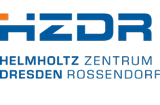Abteilung für Molekulare Strukturen
Methoden und Forschungsgebiete
Synchrotron-Methoden zu Erforschung der Nahordnung, Oxidationstufe und dem Bindungsverhalten von Actiniden, unter Verwendung dieser Methoden:
- EXAFS: Röntgenabsorptionsspektroskopie zur Aufklärung der Nahordnung eines spezifischen Elements, d.h. der Anzahl, des radialen Abstandes und der Elementart der Atome in der Koordinationsschale und den folgenden Schalen bis ca. 5 Å Abstand.
-
HERFD-XANES: Hoch-aufgelöste zur Aufklärung von Oxidationsstufen
-
XES and RIXS: Röntgenemissionsspektroskopie und sogenannte "resonant inelastic X-ray spectroscopy" zur Aufklärung des Bindungscharakters (kovalent <-> ionisch)
-
P-XRD: Pulver-Diffraktometrie mit wesentlich höherer Aufloesung oder höherer Geschwindigkeit (in-situ und in-operando Studien) im Vergleich zu Laborquellen.
-
SX-XRD: Einkristall-Diffraktion
-
Oberflächen-sensitive Techniken wie CTR (crystal truncation rods) und RAXR (resonant anomalous X-ray reflectivity)
-
EXAFS, HERFD-XANES, XES und RIXS sind nicht beschränkt auf kristalline Festphasen, sondern können auf einen weiten Bereich von Proben angewendet werden, um z. B. die wässrige Speziierung, die Komplexierung mit anorganischen (Chlorid, Sulfat, Nitrat,...) wie organischen Liganden (Acetat, Huminsaeuren,..), die Interaktion mit Bakterien und Pflanzen, oder die Sorption an Mineral- und Gesteinsoberflaechen zu untersuchen.
-
Wegen der grossen Penetrationstiefe der verwendetetn harten Röntgenstrahlung können die Methoden eingesetzt werden, um chemische Reaktionen in situ/ in operando zu untersuchen, z. B. bei sehr niedrigen oder hohen Temperaturen, unter spezifischen Atmosphären oder mit elektrochemischen Potenzial.
Neuste Publikation
Probing the Long- and Short-Range Structural Chemistry in the C-Type Bixbyite Oxides Th0.40Nd0.48Ce0.12O1.76, Th0.47Nd0.43Ce0.10O1.785 and Th0.45Nd0.37Ce0.18O1.815 via Synchrotron X-ray Diffraction and Absorption Spectroscopy
Murphy, G. L.; Bazarkina, E.; Svitlyk, V.; Roßberg, A.; Potts, S.; Hennig, C.; Henkes, M.; Kvashnina, K.; Huittinen, N. M.
Abstract
The long- and short- range structural chemistry of the C-type bixbyite compounds Th0.40Nd0.48Ce0.12O1.76, Th0.47Nd0.43Ce0.10O1.785 and Th0.45Nd0.37Ce0.18O1.815 is systematically examined using synchrotron X-ray powder diffraction (S-PXRD), high energy resolution fluorescence detection X-ray absorption near edge (HERFD-XANES) and extended absorption fine structure spectroscopy (EXAFS) measurements supported by electronic structure calculations. S-PXRD measurements revealed the title compounds all form classical C-type bixbyite structures in space group Ia3 ̅ that have disordered cationic crystallographic sites with further observation of characteristic superlattice reflections corresponding to oxygen vacancies. Despite the occurrence of oxygen vacancies, HERFD-XANES measurements on the Ce L3-edge revealed that Ce incorporates as Ce+4 into the structures but involves significant local distortion akin to cluster behavior and loss of nearest-neighbors. In comparison, HERFD-XANES measurements on the Nd+3 L3-edge supported by electronic structure calculations reveal that Nd+3 adopts a local coordination environment similar to the long-range C-type structure whilst providing charge balancing for the formation of oxygen defects. Th L3-edge EXAFS analysis reveals shorter average Th-O distances in the title compounds in comparison to pristine ThO2 in addition to shorter Th-O and Th-Ce distances compared to Th-Th or Ce-Ce in corresponding F-type binary oxides (ThO2 and CeO2). These distances are further found to decrease with the increased Nd content of the structures despite simultaneous observation of the overall lattice structure progressively expanding. Linear combination calculations of the M-O bond lengths are used to explain these observations, where the role of oxygen defects, via Nd+3 incorporation, induces local bond contraction and enhanced Th+4 cation valence leading to the observed increased lattice expansion with progressive Nd+3 incorporation. Overall, the investigation points to the significance of dissimilar cations exhibiting variable short-range chemical behavior and how it can affect long-range structural chemistry of complex oxides.
Beteiligte Forschungsanlagen
- Rossendorf Beamline an der ESRF DOI: 10.1107/S1600577520014265
Verknüpfte Publikationen
- DOI: 10.1107/S1600577520014265 is cited by this (Id 38737) publication
-
 ACS Omega 9(2024)25, 27397-27406
ACS Omega 9(2024)25, 27397-27406
DOI: 10.1021/acsomega.4c02200
Permalink: https://www.hzdr.de/publications/Publ-38737
Alle Publikationen
Equipment
Die Experimente werden an der Rossendorf Beamline (BM20-ROBL), an der European Synchrotron Radiation Facility in Grenoble, Frankreich, durchgeführt.
Das Team
Die meisten von uns sind permanent an der ESRF in Grenoble.
Abteilung "Molekulare Strukturen" (Forschungsstandort Grenoble)
Leitung | |||||
| Name | Geb./Raum | +49 351 260 | |||
|---|---|---|---|---|---|
| Prof. Dr. Kristina Kvashnina | ROBL/21.6.04 | +33 476 88 2367 | |||
Mitarbeiter | |||||
| Name | Geb./Raum | +49 351 260 | |||
| Dr. Lucia Amidani | ROBL/14.1.04 | +33 476 88 1982 | |||
| Dr. Nils Baumann | ROBL/21.6.03 | +33 476 88 2849 | |||
| Dr. Elena Bazarkina | ROBL/14.1.01 | +33 476 88 4578 | |||
| Clara Lisa E Silva | ROBL/14.1.04 | +33 476 88 2044 | |||
| Jörg Exner | ROBL/BM20 | +33 476 88 2372 | |||
| Dr. Christoph Hennig | ROBL/21.6.02a | +33 476 88 2005 | |||
| Dr. Eleanor Sophia Lawrence Bright | +33 476 88 2462 | ||||
| Dr. Damien Prieur | ROBL/21.6.03 | +33 476 88 2463 | |||
| Dr. André Roßberg | 801/P316 | 2758 | |||

